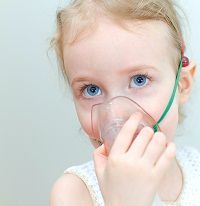Article
Microbiota Abnormalities in Inflammatory Airway Diseases: Potential for Therapy
Author(s):
The incidence of allergic asthma and other airway diseases in childhood has increased in industrialized societies, and it is known that environmental exposures play a role in their development.

The incidence of allergic airway diseases in childhood allergic asthma has increased in industrialized societies, and it is known that environmental exposures play a role in their development. It is believed that the shift of populations from a rural environment to cities increased the incidence of these diseases, said Susan V. Lynch, PhD, at the American Academy of Allergy, Asthma and Immunology’s 2015 annual conference in Houston, TX.
As humans moved from a rural environment to cities, they changed their interaction with the microbial environment. This led to the hygiene hypothesis, which suggests that the lack of exposure to microorganisms leads to allergic diseases.
Lynch told the audience that humans are composed of mammalian and microbial cells. Recent technology using specific markers for bacteria has helped identify which bacteria are present in humans. Most studies evaluated the gut, and it is now known that bacteria are essential for human health. These microorganisms are responsible for the metabolism of indigestible carbohydrates, are involved in the synthesis of vitamins and hormones, and are important to the development of the immune system.
Lynch has already demonstrated that the microbial composition of the mucosa in the upper airways dictates the susceptibility to infections, suggesting that the appropriate colonization of the mucosa is essential for health.
Several factors help determine the development of allergic airway diseases, such as lack of maternal exposure to livestock, formula feeding, C-section deliveries, maternal use of antibiotics, and the early use of antibiotics in infants. Studies have shown that the use of antibiotics profoundly decreases microbial diversity in health subjects. These risk factors seem to be more prominent in utero and in early stages of life. Indeed, several studies have shown that early exposure to fecal C. difficile is associated with the development of airway diseases later in life.
Based on studies performed in her laboratory, Lynch said that the first year of life is a key period in the development of the microbial diversity in the gut, and probably other mucosal surfaces as well. However, the source of this diversity is not clear. She speculated that during this period, indoor microorganisms colonize mucosal surfaces, interfering with the microbiome and immune response of the host and, consequently, the susceptibility to allergic diseases.
Lynch told the audience that in 2002 a study had reported that exposure to dogs and cats protected against allergic diseases. To further understand the source of this diversity, Lynch studied the diversity and distribution of bacteria in dust from houses from this study. She observed that dust from houses with no pets had diminished diversity and distribution when compared to dust from houses with dogs or cats. She concluded that reduced bacterial exposure increased atopy development and that houses that have risk factors for asthma development had a different microbial environment. She also said that large cohort studies found similar results.
Next, Lynch explained that the infant gut microbiome profile changes over the first year of life, and that three distinct microbiome profiles have been clearly identified in children less then six month of age. These distinct profiles have important clinical consequences. Children who have a microbiome co-dominated by phytobacteria and enterobacteria have higher risk of developing allergic diseases than children with microbiomes dominated by phytobacteria or enterobacteria.
In summary, the development of atopic diseases is associated with a distinct composition and function of the neonatal gut microbiome. The development of new therapies to be used in the very early stages of childhood could represent a new option for the treatment of allergic diseases.





